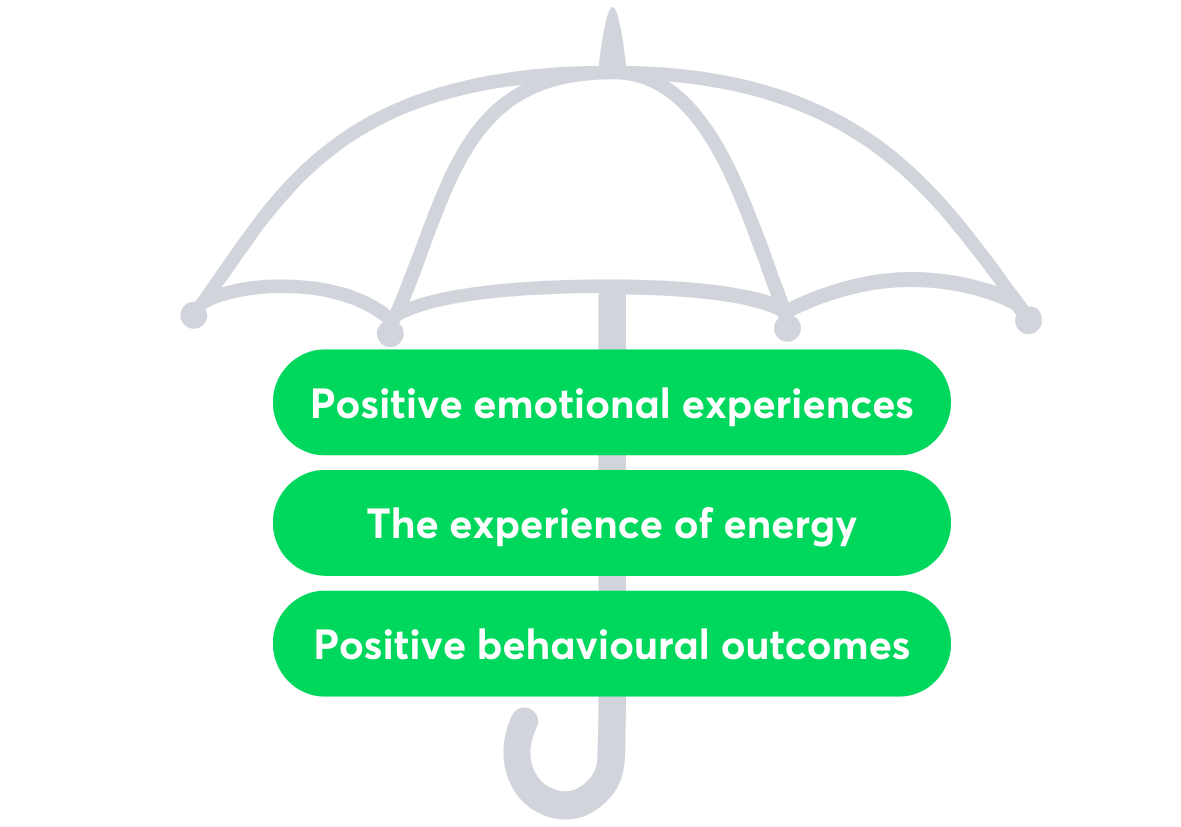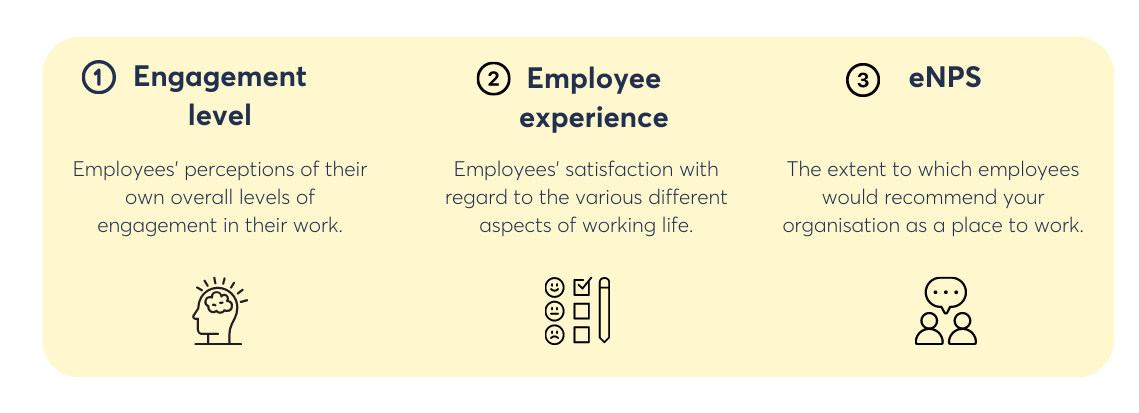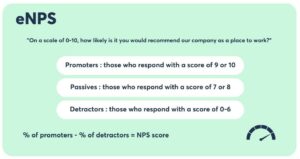Engagement Meter 2.0
Au programme :
Le récap de l’article
Let’s discover together in this article written by our expert in work psychology the importance of employee engagement in companies.
What is employee engagement ?
Take a look at the organisational psychology literature and you’ll find a number of different definitions for the term engagement. At Zest, we view employee engagement as an umbrella term embracing three key aspects (cf. Green et al. 2017) : According to Green’s definition, we, as individuals, come to work with a set of expectations about what work should bring to our lives (these can also be seen as needs to be fulfilled by work). Our expectations/needs are developed as a function of our different experiences, contexts and education. For one individual, work could be simply a means to an end financially, for another, it could be a means for self-expression.
When our needs are met or our expectations are confirmed, we can experience engagement in our work (and therefore disengagement if the contrary is true and our needs or expectations are not met). This notion of confirming or going against our expectations is crucial to engagement, highlighting its individualised nature.
According to Green’s definition, we, as individuals, come to work with a set of expectations about what work should bring to our lives (these can also be seen as needs to be fulfilled by work). Our expectations/needs are developed as a function of our different experiences, contexts and education. For one individual, work could be simply a means to an end financially, for another, it could be a means for self-expression.
When our needs are met or our expectations are confirmed, we can experience engagement in our work (and therefore disengagement if the contrary is true and our needs or expectations are not met). This notion of confirming or going against our expectations is crucial to engagement, highlighting its individualised nature.
Why measure employee engagement ?
There are a multitude of benefits that have been shown to result from employee engagement:- Reduced absenteeism
- Reduced turnover
- Increased productivity
- Better customer satisfaction… and more.
How to measure employee engagement ?
The first step to enhancing employee engagement is to gauge the current state of affairs – how engaged are your employees now? But in doing so, it’s also important to understand how engagement can be improved: based on employees’ expectations of work, what could be done to improve their levels of engagement? Zest’s Engagement Meter therefore provides you with 3 key scores: The science behind the questions
Engagement Level
This question provides a valuable snapshot of the employee’s perception of their own overall level of engagement in their work.
It represents a new addition to the Engagement Meter, keeping in line with recent research highlighting the accurate and reliable measure of workplace engagement through a single-item measure (read the article here). Adding this question alongside the subsequent two key scores, provides us with a more comprehensive view of employee engagement.
The science behind the questions
Engagement Level
This question provides a valuable snapshot of the employee’s perception of their own overall level of engagement in their work.
It represents a new addition to the Engagement Meter, keeping in line with recent research highlighting the accurate and reliable measure of workplace engagement through a single-item measure (read the article here). Adding this question alongside the subsequent two key scores, provides us with a more comprehensive view of employee engagement.
Employee experience
This score is calculated from the average of all 6 axes of engagement, enabling us to evaluate how satisfied employees are with regard to various aspects of working life (relationships with one’s manager and colleagues, working conditions…). By examining the principal areas of employee satisfaction/dissatisfaction, managers & HR professionals can obtain valuable insights, helping to identify areas for improvement to enhance engagement. The scores to all these elements of employee experience have been shown to reliably predict a key measure frequently cited in employee engagement: the eNPS.eNPS
The eNPS question (see below) measures the extent to which employees recommend the company as a place of work. Categorising employees as promotors, passives or detractors enables us to calculate the NPS score. Recommendation is an important aspect of employee engagement to measure, but alone is an insufficient indicator of engagement. For example, some employees may recommend the company as a great place to work, but lack motivation and commitment. On the other hand, some may not recommend the company as they lack the right connections in their network but can be motivated and committed.
How engaged are your employees ? Discover with Zest’s Engagement meter tool !
Recommendation is an important aspect of employee engagement to measure, but alone is an insufficient indicator of engagement. For example, some employees may recommend the company as a great place to work, but lack motivation and commitment. On the other hand, some may not recommend the company as they lack the right connections in their network but can be motivated and committed.
How engaged are your employees ? Discover with Zest’s Engagement meter tool !
